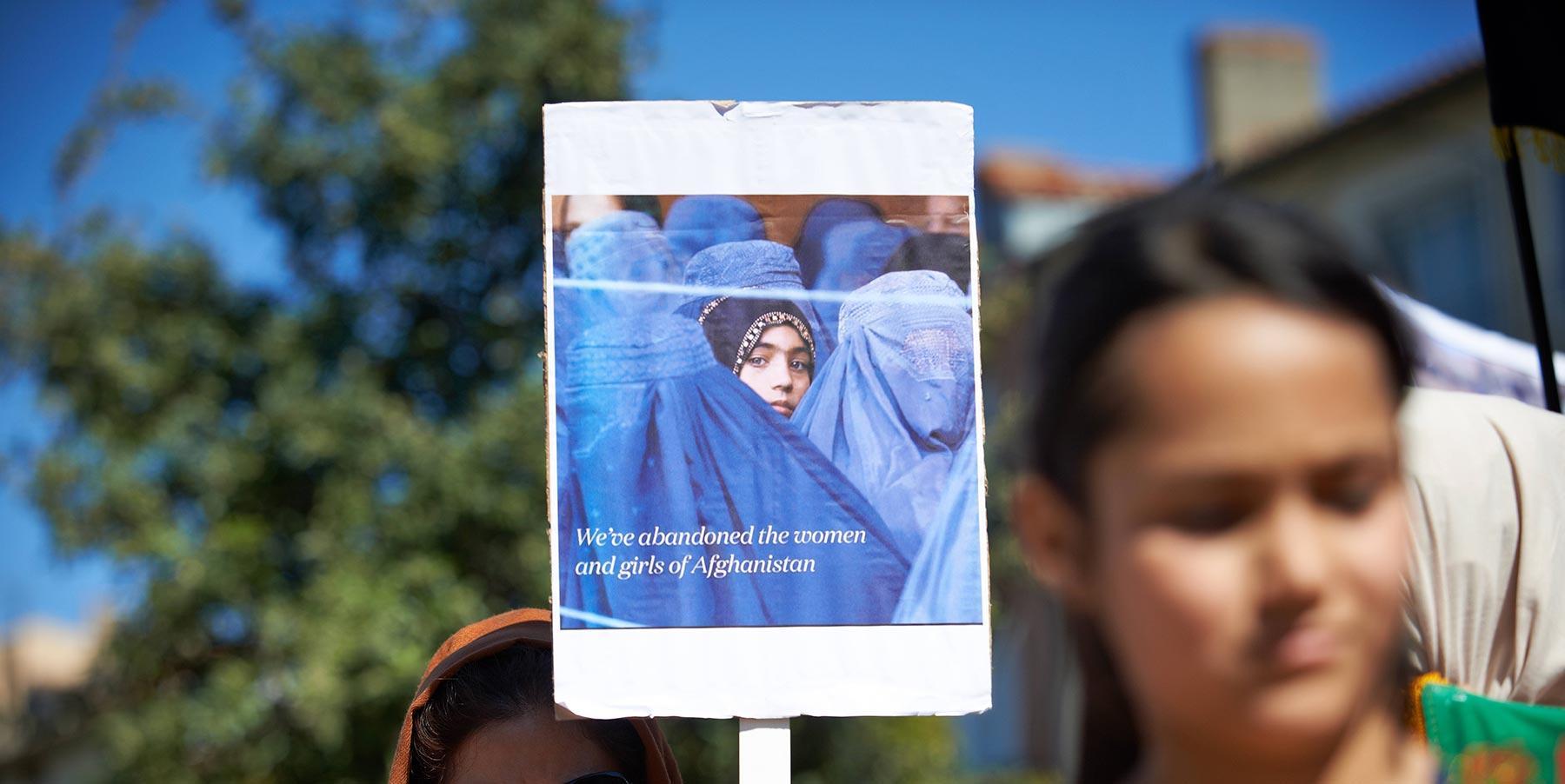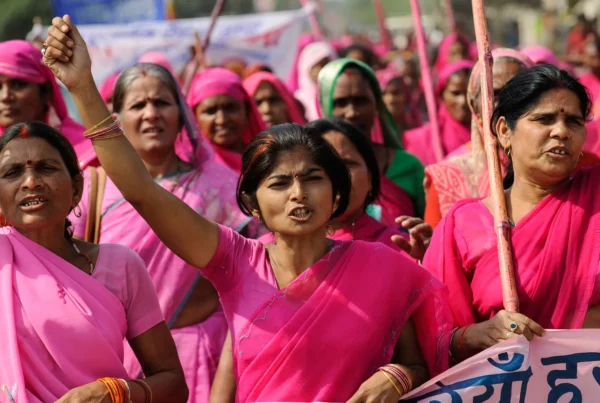The chaotic US withdrawal from Afghanistan and subsequent takeover by the Taliban in August 2021 has created a dire humanitarian crisis. Economic collapse and drought have “forced” Afghan families to sell their daughters for cash to pay for food for the rest of the family. Women and girls have been stripped of their rights. President Biden’s controversial decision to use half of USD 7 billion in released Afghan funds to compensate the victims of 9/11 has exacerbated the situation.
Alison Westervelt, 17 February 2022
The situation in Afghanistan is quickly becoming the world’s most serious humanitarian crisis. In August 2021, the US withdrew without consulting any of its allies, leaving the country in chaos and the economy in free fall. The Taliban quickly took over. A humanitarian disaster has resulted, half of the population is starving, and the country is entering the second year of the worst drought in decades while western countries withhold aid.
With jobs disappearing and the 2022 wheat harvest down 20 percent compared to that of 2021, the UN Office for the Coordination of Humanitarian Affairs, OCHA, reports that half the population – almost 22.8 million people – are facing acute hunger and food insecurity. While 98 percent of the entire population are short of food, half of the women and children in the country are in danger of starvation. More than nine million people have been displaced and there are millions of children out of school. Martin Griffiths, the UN Emergency Relief Coordinator, explained that one million children are at risk of severe acute malnutrition if the situation does not improve.
The situation has become so desperate that reports of families selling their daughters for cash to pay for food are mounting. Leaders in a camp of displaced people explained to The Times of Israel that instances of girls being sold into marriage by their families rose initially during the famine of 2018 but have soared this year as Afghanistan enters its second year of drought. A November 2021 report by UNICEF confirmed that child marriage is increasing in Afghanistan.
Afghan law forbids marrying children under 15, which is three years below the internationally recognized standard age of 18, but the practice is still common. Child marriage has been practiced in Afghanistan for centuries, but the dire situation has prompted many parents to betroth their daughters at much younger ages.
In one case reported by the Pakistani newspaper Dawn, an Afghan family sold both their six-year-old and 18-month-old daughters for a little more than USD 6000. One 25-year-old mother who is currently at a displaced persons’ camp explained that she was forced to sell her three-year-old daughter to a grocer to pay for the debt she accrued buying food to feed her family, after the grocer warned that he would have her jailed if the debt was not repaid.
Child marriage is largely driven by poverty and has disastrous effects on girls. It is a violation of a child’s human rights and constitutes gender-based violence that robs girls of their childhood. Research by the humanitarian aid organization Save the Children shows that child marriage disrupts education and increases vulnerability to violence, discrimination, and abuse. In addition to the loss of education, child brides are often robbed of their right to health, safety, and participation. Many girls are forced to marry significantly older men and are at much greater risk of experiencing dangerous complications in pregnancy and childhood, contracting HIV/AIDs, and experiencing sexual violence.
Since the US left and the Taliban took over, the rights of women and girls have disappeared. In 2018 during the US occupation, more than 80 percent of girls were enrolled in primary school and women held 20 percent of civil servant positions. Now women are no longer permitted to work or appear in public without a male guardian. Girls older than 12 are forbidden from returning to primary school and strict gender segregation policies at universities have seen the number of women enrolled in higher education plummet.
In mid-January, the United Nations launched an appeal for USD 5 billion in funding to ease the dire humanitarian crisis in Afghanistan. The UN reported that it is the largest single-country aid appeal it has ever made. Money raised will be paid directly to health workers to avoid its falling into the hands of the Taliban, the de facto authorities.
Afghanistan’s liquidity crisis is only exacerbated existing problems. After the US withdrawal and Taliban takeover, the Biden administration halted most aid to Afghanistan. The US froze USD 9.5 billion of Afghanistan’s foreign reserves and pressured the International Monetary Fund to delay emergency support. Foreign aid payments, which made up 40 percent of Afghanistan’s GDP, were halted.
On 11 February President Joe Biden signed an executive order releasing USD 7 billion in frozen Afghan reserves. In a highly unusual act, the President ordered that the Afghan funds be split between humanitarian efforts for the Afghan people and American victims of terrorism, including relatives of 9/11 victims. This move has infuriated the Afghan population and critics warn that withholding these funds could tip Afghanistan’s already-strained banking system into systemic failure and worsen the already dire humanitarian crisis.
With the Afghan government unable to pay the salaries of officials, jobs have dried up and more than half a million people are out of work. The UN’s International Labour Organization predicts that jobless numbers will climb to almost a million when factoring in the Taliban restrictions on women’s access to the job market. David Miliband, the President and Chief Executive of the International Rescue Committee, took to Twitter to call for a bigger humanitarian response. Miliband pointed out that “without a functioning economy and banking system, we are facing terrible odds. Need massive economic stabilization package to stop the rip current.”
Humanitarian organizations cannot operate in Afghanistan if there is no cash in the economy to pay for gas, salaries, etc. If the situation is not stabilized, the crisis in Afghanistan will spread throughout the region and create a refugee crisis as millions of people have been forced from their homes since the US left and the Taliban took over. It may also create a new generation of terrorists.
The situation in Afghanistan requires an urgent international response that includes greater efforts by the US, whose hasty withdrawal created the current crisis and power vacuum which was quickly and easily filled by the Taliban. In a letter published by the Atlantic Council in December, US diplomats and former US military commanders in Afghanistan urged Washington to take action and pointed out the “moral obligation” of the United States to work with key allies and “come forward with tangible proposals to help stabilize the Afghan economy.”
While the discussion is centered around the economy, those with the power to act must remember that the women and girls of Afghanistan are starving and have been stripped of their rights. Every day without solutions will bring more suffering and death for the people of Afghanistan and more girls sold for cash.






